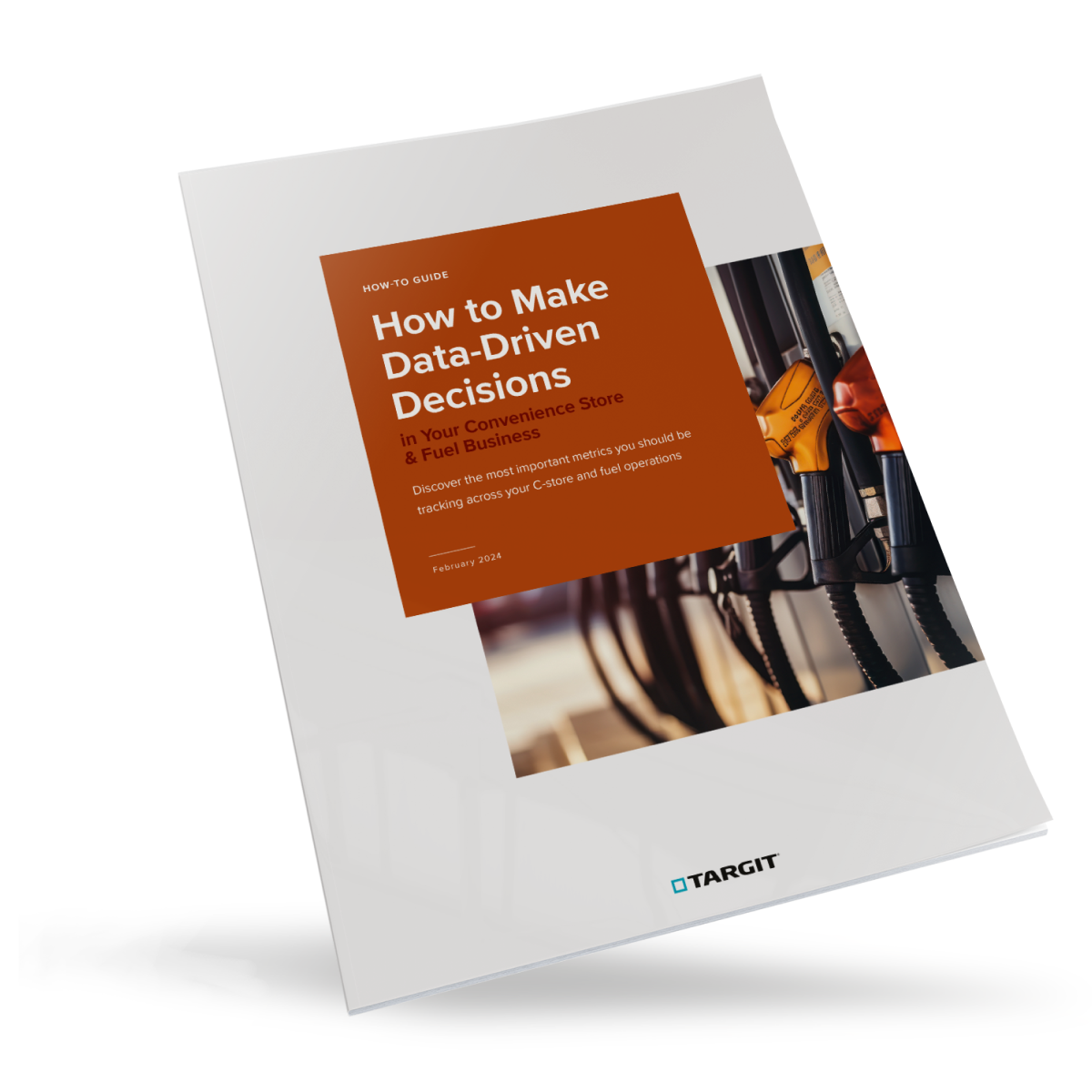- blog
- Top Convenience Store Trends: Using Data Driven Insights to Increase Sales
Top Convenience Store Trends: Using Data-Driven Insights to Increase Sales


Convenience store (C-store) and wholesale fuel operators are just a few of the many business leaders feeling the effects of inflation and increased operating expenses. And as the market continues to evolve, these operators must prioritize efficiency while adapting to seize the opportunities presented by emerging trends.
Many operators face the challenge of meeting consumers' ever-changing demands while supporting their bottom line. Others want to capitalize on the latest innovations — like Electric Vehicle charging stations, personalized loyalty programs, and AI-powered advertising campaigns — to futureproof their business against the competition.
No matter their goals, constraints, or current state, C-store operators and wholesale fuel suppliers should inform their next steps with reliable, up-to-date information. Rather than taking trends at face value, they must analyze the data behind them to understand how each trend relates back to their business and the potential benefits it holds.
In this blog post, we’ll outline three crucial convenience store trends and discuss how operators can use data analysis to make informed decisions about these trends, upgrade their offerings, and increase customer satisfaction across touch points.
1. Higher Fuel Prices Mean More Pump Transactions, But Fewer Gallons per Stop
U.S. fuel dollar sales increased by 32.9% in 2022, according to the Convenience Store News (CSN) Industry Report 2023. However, increasing fuel prices meant that, despite much higher sales numbers for convenience store and gas station operators, actual fuel demand didn’t change much between 2021 and 2022. According to CSN’s industry report, gallons sold only increased by 1.6% in the same time period.
And even though Americans are consuming about the same amount of gasoline as in previous years, they are making more visits to the pump. The CSN Industry Report 2023 also found that motor fuel transactions per week increased by 3.6% between 2021 and 2022.
These more frequent visits create opportunities for operators to promote and cross-sell car washes, in-store products, and on-site restaurant items. But where and how they advertise and offer deals to fuel customers should depend on the details of their pump transactions.
Gas station operators can use a business intelligence (BI) solution to analyze fuel sales data and compare their fuel prices to the competition. Then, cross-reference fuel sales reports with sales data from other parts of the business to answer questions like:
- Are fuel customers making in-store or restaurant purchases when they visit to fill up?
- Which products are they buying most often?
- How can we use these insights to increase sales?
Frequent visits to the pump also give operators and customers alike a chance to cash in on C-store loyalty programs. Operators can offer customers a discount or exclusive offer for visiting their business consistently rather than shopping around for their routine fill-ups.
What’s more, these programs incentivize customers to spend more than they normally would at each visit, according to a 2021 study by Paytronix which found that C-store loyalty members spend about 38% more on average than non-loyalty members.
2. Inflationary Pricing is Changing Consumer Shopping Habits
Consumers worldwide are adjusting their shopping habits due to inflation. These modified purchasing behaviors have made their way to convenience stores, where shoppers are buying fewer items on average each time they step inside the store.
In fact, consumers bought 10.3% fewer items at each convenience store visit by the end of 2022 compared to 2021, according to Information Resources Inc.’s U.S. Convenience Store Landscape Q4 2022 Report. Dollar sales only declined by 0.3% during this same time period; evidence that buyers’ budgets don’t stretch as far as they used to.
So how can operators create a positive upturn in dollar sales while ensuring customers feel like they’re getting substantial value for their money?
Inventory reports and dashboards give store managers, district managers, and other stakeholders in-depth insights into exactly what customers are buying at every store. They can use these insights to find the top-selling products at the category and item level and determine which products or product categories generate the most profit.
Operators can then cross-reference multiple data points to find which products sell the best and which ones have the highest sales margins. That way, they can bundle top performers with less successful items and use these deals to give customers more for their money while turning over products with the lowest overhead costs.
3. Direct Store Operating Expenses (DSOE) Continue to Increase
Industry DSOE rose 14.5% from 2021 to 2022, according to the CSN Industry Report 2023. Higher credit card processing fees are the most notable contributors to these operating expenses, especially as cashless payment options continue to grow in popularity. Credit card “Swipe fees” increased by 32.4% in 2022, costing each store an average of $149,280 for the year.
Labor is another category in which operating expenses continue to rise. In 2022, wages increased by 11.8% and cost each store an average of $51,413 more than the year before.
Like many other industries, convenience stores and gas stations have seen a rapid increase in wage-related costs over the past several years. In fact, each store paid over $150,000 more in wages in 2022 compared to 2018, according to the CSN Industry Report 2023.
When it comes to swipe fees and similar operating costs, C-store managers and operators should generate routine reports that monitor operating expenses in every segment of the business. Ideally, these reports should allow them to drill down into the details of each transaction, purchase, investment, etc., so that they can understand where excessive costs originate — and whether they can be lowered.
For example, a daily or weekly expense report could enable operators to catch any changes in fees from a particular supplier or credit card processor right away. These prompt insights empower operators to quickly find and reduce unnecessary costs instead of realizing six months later that they have been overpaying for a specific product or service.
Larger economic factors are responsible for the general increase in wages and other staffing-related expenses across industries. However, that doesn’t mean C-stores and fuel companies can’t find ways to optimize these costs within their own operations.
Along with monitoring operating expenses across the business, managers and other leaders can reference sales and customer volume data when deciding how many employees to schedule for each shift.
So, rather than taking a one-size-fits-all approach, like always having ten employees in the store, managers can adjust staffing daily or hourly depending on the expected foot traffic. This allows them to match staff levels to customer demand and enhance operational efficiency.
Using Data to Keep Up with the Latest Convenience Store Trends
Convenience store operators can use data analysis and routine reporting to unlock tremendous potential in today's evolving market. From rolling out new loyalty programs to adjusting operating expenses behind the scenes, data-driven decision-making allows operators to meet consumer demands and drive business growth.
By staying informed and using the power of data, operators can thrive in an increasingly competitive industry and deliver exceptional customer experiences.
TARGIT’s all-in-one BI solution gives C-stores and fuel companies the insights they need to adapt to emerging convenience store trends and make informed decisions about their own operations.
Our solution makes it easy to combine data from multiple sources and business systems, giving operators a complete view of their operations — and the ability to share actionable insights with their entire team.
Interested in learning more?
Request a personalized demo today to see how TARGIT can help you:
- Consolidate reporting across every business system
- Monitor daily performance and track long-term trends
- Unlock actionable insights that fuel efficiency and profitability







